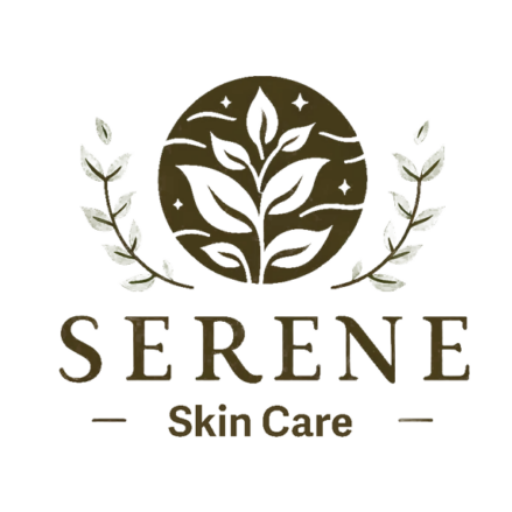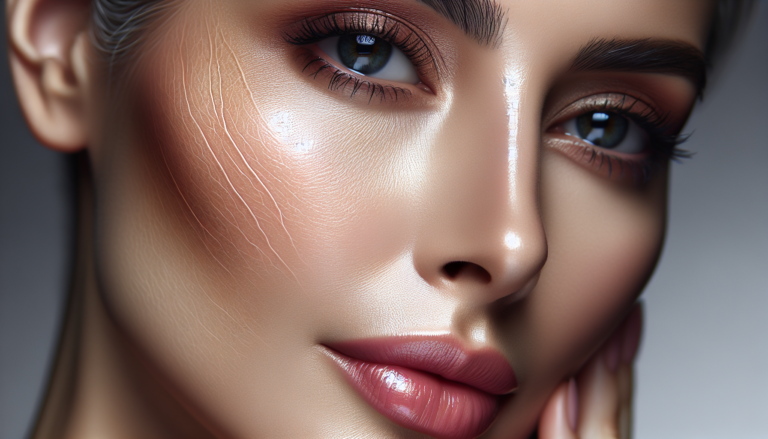Microneedling, a popular skincare treatment, involves using tiny needles to create microscopic punctures on the skin’s surface, stimulating collagen production and rejuvenating the complexion. This Article explores the process, benefits, and aftercare of microneedling, shedding light on how this non-invasive procedure can tackle a variety of skin concerns, from fine lines and wrinkles to acne scars and hyperpigmentation. Whether you’re curious about trying microneedling for the first time or looking to enhance your existing skincare routine, this comprehensive guide will provide all the necessary information to ensure a successful and satisfying experience.
What is Microneedling?
Microneedling is a non-invasive cosmetic procedure that involves the use of small, sterile needles to create tiny punctures in the skin. This process, also known as collagen induction therapy, stimulates the skin’s natural healing response, leading to the production of new collagen and elastin. The result is improved skin texture, reduced scars and stretch marks, and a more youthful appearance.
Definition
Microneedling, as the name suggests, refers to the use of microscopic needles to create controlled micro-injuries on the skin’s surface. These tiny punctures trigger the body’s natural healing process, stimulating collagen production and rejuvenating the skin.
Purpose
The main purpose of microneedling is to address various skin concerns such as scars, wrinkles, and uneven texture. It can be used to improve the appearance of acne scars, diminish fine lines and wrinkles, and even out skin tone. Additionally, microneedling can enhance the effectiveness of skincare products by increasing their absorption into the skin.
Historical Background
The concept of microneedling dates back thousands of years. In ancient China, practitioners used small, sharpened tools made from bamboo or bone to create controlled injuries on the skin and promote collagen synthesis. Over time, the technique evolved, and modern microneedling devices were developed, utilizing fine needles and advanced technology to achieve optimal results.
The Microneedling Process
Microneedling involves several steps to ensure a safe and effective procedure.
Preparation
Before the procedure, the skin is thoroughly cleansed to remove any makeup, oils, or debris. A numbing cream may be applied to minimize discomfort during the treatment. The practitioner will review the procedure and address any questions or concerns the patient may have.
Procedure
During the microneedling procedure, a handheld device with fine needles is gently rolled or stamped over the skin. The needles create controlled micro-channels, which prompt the skin to produce collagen and elastin. The depth of penetration can be adjusted based on the specific needs and goals of the patient.
Devices used
Various devices can be used for microneedling, including derma rollers and automated pens. Derma rollers consist of a handle and a roller with numerous small needles. Automated pens feature disposable needle cartridges that rapidly puncture the skin at a precise depth and speed.
Depth of penetration
The depth of needle penetration depends on the specific skin concerns being addressed. Superficial microneedling targets the uppermost layers of the skin, while deeper treatments may penetrate into the dermis. Deeper treatments are often used for scar revision and collagen remodeling.
Duration
The duration of the microneedling procedure can vary depending on the area being treated. Typically, a session can last anywhere from 30 minutes to an hour. However, this may vary based on the individual needs of the patient and the extent of the treatment.
Sessions required
The number of sessions required can also vary depending on the individual and the skin concerns being addressed. Generally, a series of 4-6 sessions, spaced 4-6 weeks apart, is recommended to achieve optimal results. However, this can be tailored to the specific needs and goals of the patient.
Benefits of Microneedling
Microneedling offers a wide range of benefits for the skin, making it a popular choice among individuals seeking to improve their complexion.
Stimulates collagen production
One of the key benefits of microneedling is its ability to stimulate collagen production. The micro-injuries created during the procedure trigger the body’s natural healing response, leading to the production of new collagen and elastin. This helps to improve skin elasticity and firmness, reducing the appearance of fine lines and wrinkles.
Reduces scars and stretch marks
Microneedling has been shown to be effective in reducing the appearance of scars, including acne scars and stretch marks. The controlled micro-injuries created during the procedure break down scar tissue and promote the regeneration of new, healthy skin cells. Over time, this can result in smoother, more even-toned skin.
Diminishes wrinkles and fine lines
By stimulating collagen production and improving skin elasticity, microneedling can help diminish the appearance of wrinkles and fine lines. The increased collagen and elastin in the skin can plump and tighten the skin’s surface, resulting in a more youthful and rejuvenated appearance.
Improves skin texture and tone
Microneedling can also improve the overall texture and tone of the skin. The procedure helps to exfoliate the outer layer of the skin, promoting cell turnover and revealing fresher, smoother skin underneath. It can also help to reduce hyperpigmentation and even out skin tone, leaving the complexion looking more radiant and uniform.
Increases absorption of skincare products
One often overlooked benefit of microneedling is its ability to enhance the absorption of skincare products. The micro-channels created during the procedure allow for better penetration of active ingredients, maximizing the effectiveness of topical treatments. This can lead to greater improvement in skin concerns and a more targeted approach to skincare.
Aftercare Post-Microneedling
Proper aftercare is essential to ensure optimal healing and results following a microneedling procedure.
Immediate post-procedure care
After microneedling, the treated skin may appear red or inflamed, similar to a sunburn. It is important to keep the treated area clean and avoid touching or rubbing the skin. A gentle, non-irritating cleanser and moisturizer should be used to hydrate and protect the skin during the healing process.
Avoidance of sunlight and intense activities
Exposure to sunlight and intense activities should be avoided for a few days following the procedure. The skin will be more sensitive and prone to sunburn, so it is crucial to apply a broad-spectrum sunscreen with at least SPF 30 and seek shade when outdoors.
Proper skincare routine
Following a microneedling procedure, it is important to follow a proper skincare routine to support the healing process and maintain the results. This typically includes gentle cleansing, moisturizing, and the use of products specifically recommended by the practitioner.
Use of SPF
Sun protection is crucial after microneedling. Regular use of a broad-spectrum sunscreen with a minimum SPF of 30 is essential to protect the skin from harmful UV rays that can delay the healing process and potentially result in hyperpigmentation.
Avoidance of certain products and treatments
Certain skincare products and treatments should be avoided for a period of time after microneedling. This may include retinol, acidic exfoliants, and harsh chemical-based products. It is best to consult with the practitioner for specific guidelines on what to avoid during the healing process.
Potential Side Effects
While microneedling is generally safe, it can have some potential side effects, although they are usually temporary and resolve on their own.
Temporary redness and inflammation
Immediately after the procedure, the treated skin may appear red and inflamed. This is a normal reaction and typically subsides within a few hours to a day. Applying a cooling, soothing moisturizer can help alleviate any discomfort.
Skin sensitivity and dryness
Microneedling can temporarily leave the skin feeling more sensitive and dry than usual. It is important to use gentle, hydrating skincare products to prevent further irritation and maintain the moisture barrier of the skin.
Minor bruising and bleeding
In some cases, microneedling may result in minor bruising or bleeding, especially with deeper treatments. However, this is usually minimal and resolves within a few days. It is important to follow the aftercare instructions provided by the practitioner to minimize the risk of bruising.
Risk of infection
Although rare, there is a slight risk of infection following microneedling if proper aftercare procedures are not followed. It is important to keep the treated area clean and avoid touching it with dirty hands. If signs of infection such as increased redness, pain, or pus occur, medical attention should be sought.
Skin pigment changes
In individuals with darker skin tones, there is a small risk of hyperpigmentation or hypopigmentation following microneedling. This risk can be minimized by following proper aftercare, avoiding sun exposure, and using appropriate skincare products recommended by the practitioner.
Who should Consider Microneedling?
Microneedling is a versatile treatment suitable for various skin concerns and individuals of different ages and skin types.
Individuals with acne scars
Microneedling can be highly effective in reducing the appearance of acne scars. By promoting collagen production and stimulating cell turnover, it helps to smooth out the texture of the skin and diminish the visibility of acne scars.
People with signs of aging
For individuals experiencing signs of aging such as fine lines, wrinkles, and sagging skin, microneedling can provide significant improvements. The procedure stimulates collagen production and tightens the skin, resulting in a more youthful and rejuvenated appearance.
Those with uneven skin texture and tone
Uneven skin texture and tone can be effectively addressed with microneedling. By promoting cell turnover and collagen synthesis, the procedure smooths out rough areas and improves the overall texture and tone of the skin.
Individuals looking to enhance skincare routine
Microneedling can serve as a complementary treatment to enhance an individual’s skincare routine. By improving the absorption of skincare products, it allows for better penetration of active ingredients and maximizes their effectiveness.
Microneedling versus other Skin Treatments
While microneedling offers numerous benefits, it is important to understand how it compares to other popular skin treatments.
Comparison with chemical peels
Chemical peels involve the application of a chemical solution to the skin to remove the top layers and stimulate collagen production. While both microneedling and chemical peels can improve skin texture and tone, microneedling has the advantage of being less invasive and having a shorter recovery time.
Contrasting with laser resurfacing
Laser resurfacing uses a laser to remove damaged skin cells and stimulate collagen production. While laser resurfacing can provide excellent results, it can also be more expensive, have a longer recovery time, and may be associated with a higher risk of complications compared to microneedling.
Differentiation from dermal fillers
Dermal fillers are injectable substances used to restore volume and fill in wrinkles and lines. While microneedling can improve skin texture and stimulate collagen production, dermal fillers are better suited for adding volume to specific areas of the face. These two treatments can complement each other to achieve comprehensive facial rejuvenation.
Microneedling Myths and Misconceptions
There are several common myths and misconceptions surrounding microneedling that need to be addressed.
Pain during the procedure
Contrary to popular belief, microneedling is generally well-tolerated and minimally uncomfortable. Prior to the procedure, a numbing cream can be applied to the skin to minimize any potential discomfort. Most individuals describe the sensation as a mild prickling or vibrating feeling.
Needles causing significant bleeding
While microneedling involves the use of needles, the depth of penetration can be adjusted to minimize bleeding. With proper technique and appropriate needle length, any bleeding during the procedure is typically minimal and stops quickly.
Long recovery time
Another misconception about microneedling is that it requires a long recovery time. In reality, the redness and inflammation usually subside within a day or two, and the majority of individuals can resume their normal activities immediately. However, following the recommended aftercare guidelines is crucial to support the healing process.
Unsafe for darker skin tones
Microneedling is generally safe for individuals with darker skin tones when performed by a qualified practitioner. However, there is a slightly higher risk of pigment changes, such as hyperpigmentation or hypopigmentation, in individuals with more melanin in their skin. Proper aftercare and sun protection are especially important for darker skin tones to reduce the risk of complications.
Professional Versus At-home Microneedling
There are options for both professional and at-home microneedling, each with its own set of benefits and considerations.
Benefits of professional microneedling
Professional microneedling is performed in a controlled clinical setting by a trained practitioner. It allows for a more customized treatment based on individual needs and ensures proper sterilization and safety protocols. Professional microneedling devices typically offer a wider range of needle depths and are designed to provide more consistent results.
Advantages of at-home microneedling
At-home microneedling devices are becoming increasingly popular due to their convenience and affordability. They allow individuals to perform the procedure in the comfort of their own homes, although with less depth and precision compared to professional devices. At-home microneedling can be beneficial for maintenance between professional sessions or for individuals who prefer a more gradual approach to treatment.
Considerations when choosing the method
When deciding between professional and at-home microneedling, it is important to consider the individual’s specific needs and goals, as well as their comfort level and ability to properly follow aftercare instructions. It is advisable to consult with a qualified practitioner to determine the most suitable approach.
Conclusion
Microneedling is a popular cosmetic procedure that offers numerous benefits for individuals seeking to improve their skin’s appearance and texture. By involving the use of tiny needles to create controlled micro-injuries, microneedling stimulates collagen production, reduces scars and wrinkles, and enhances overall skin quality. With appropriate aftercare and consideration of individual needs, microneedling can be a highly effective treatment option for achieving smoother, more youthful-looking skin.




